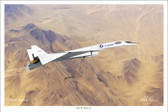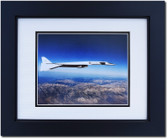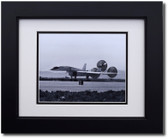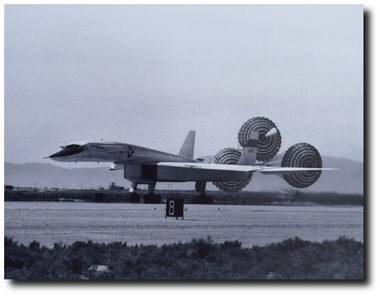 Loading... Please wait...
Loading... Please wait...- Home
- Aviation Gifts Under $50
- Unframed - Aviation Photos
- XB-70 Landing With Parachutes Deployed
Categories
XB-70 Landing With Parachutes Deployed
Product Description
XB-70 Landing With Parachutes Deployed
Dimensions: 8" x 10"
Plane Type: North American XB-70
The North American Aviation XB-70 Valkyrie was the prototype of the B-70 nuclear-armed, deep-penetration strategic bomber for the Strategic Air Command of the U.S. Air Force. In the 1950s, the North American Aviation company designed the Valkyrie bomber as a large, six-engine aircraft capable of reaching Mach 3+ while flying at 70,000 feet (21,000 m), which velocity and altitude capabilities would allow the evasion of interceptor aircraft, then the only effective weapon against bomber aircraft.
In 1961, improved, high-altitude surface-to-air missiles (SAMs), the U.S. Air Force's doctrinal change to low-level penetration bombing, the large development costs of the B-70 program, and the introduction of intercontinental ballistic missiles (ICBMs) to the U.S. nuclear arsenal, led to the cancellation of the B-70 program. As such, two prototype aircraft were built, and designated XB-70A; these aircraft were used for supersonic test-flights during 1964-69. In 1966, one prototype crashed after colliding in midair with a smaller jet aircraft; the remaining Valkyrie bomber is in the National Museum of the United States Air Force, in Dayton, Ohio.








